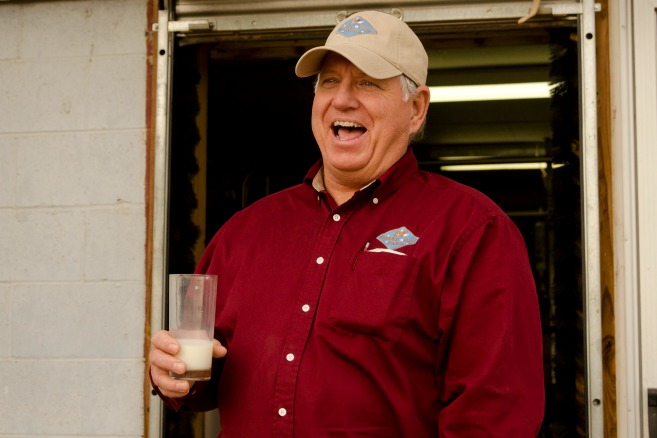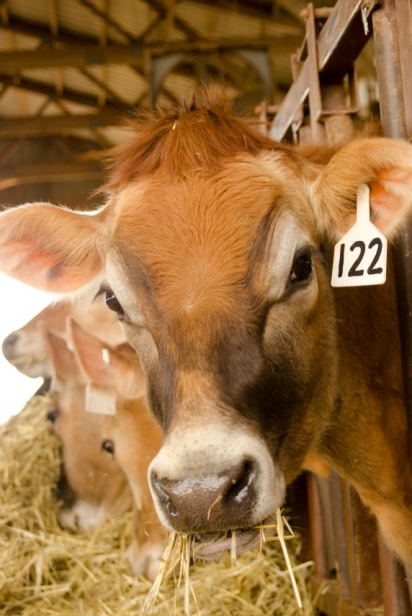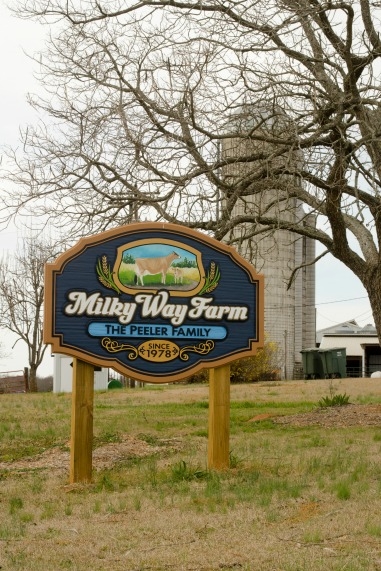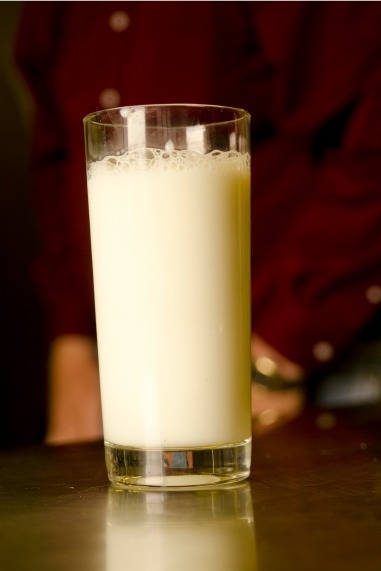Fresh, Healthy, Raw
Nearly fifty miles southwest of Greenville, the land around Starr rolls and opens in contrast to the mountains, visible in the distance. When L.D. Peeler first came here in the late 1980s, searching for farmland on which to relocate his dairy, he noted, “you couldn’t get a better view of the stars than here.” At the time, the land he chose was called Hidden Hills. Peeler wanted a name to note the stars. Thus, Milky Way Farm. And Milky Way became a dairy, producing raw milk.
When he started out, buying fifty cows from his father in Gaffney 1978, Peeler hadn’t considered raw milk. By 1983, that had changed, and, by the time he moved eighty-six head of cattle to Starr in 1987, he was committed to raw milk. That’s fresh-from- the-cow, not homogenized, not pasteurized, full-fat milk. There are still only a handful of farms producing raw milk in South Carolina, and most of these are smaller than Milky Way Farm. Dotted across the Upstate, from Abbeville to Gaffney, raw milk farmers are finding a growing market for their product.
The flavor reminds me of the milk that used to arrive, seemingly like magic, on the front doorstep of my childhood home, rich and well worth a sprint to get to it first, worth the ensuing battle with my brother over the cream that rose to the top and worth the maternal repercussions for running in the house, for not sharing in the first place, for fighting. Nothing mattered but that cream on my cornflakes. Three thousand miles and a few decades behind me, the milk of my childhood is a memory I thought I’d never taste again. Until I stepped on to the Milky Way Farm.
For some folks, just that flavor is enough to keep them coming back for it. One of the most common groups of people who seek out raw milk is older folks who say it brings back memories of childhood milk. They buy the milk directly from farmers like Peeler— he drives up I-85, selling milk to individuals at a variety of delivery points—or from specialty stores like the Swamp Rabbit Café in Greenville. These people, as well as another common group, young families who are after the health benefits touted by raw milk advocates, shun the warnings from those who say drinking raw milk comes with the risk of consuming harmful bacteria. They walk right past the DHEC warning that retail owners are required to post; if the raw milk isn’t there, they do without.
Swamp Rabbit Café owner Jacqueline Oliver says she started to buy raw milk primarily because the person from whom she bought the equipment to set up the café told her that selling raw milk was a must. Peeler’s minimum delivery amount is 50 gallons— he drives with 1,200 when he does deliveries. Oliver and her partner, Mary Walsh, said okay, though they weren’t quite sure what they were going to do with that amount, every other week. Once word got out, they didn’t have a problem— now, two years later, they take 120 gallons a week. Once people find out that the store carries raw milk, they schedule visits to coincide with Peeler’s deliveries.
“There’s a huge following,” Oliver says. “They come from North Carolina and Georgia with coolers. Some buy as much as fifteen gallons.” That’s because South Carolina is one of only ten states that allow retail sales of raw milk.
The production and sales of raw milk are highly regulated. Peeler claims that the tight regulations help make raw milk as safe as pasteurized milk. Milk on his dairy is chilled to below 40° almost immediately after milking, which means any harmful bacteria that might be present don’t have time to multiply. Peeler also notes that his cows are cleaner than larger dairies and well tended. He’s a third-generation farmer who loves taking care of cows.
“My cows have the best of both worlds,” he says. “They have free access to stalls like larger dairies, as well as access to the pasture all the time.”
A computerized feeding system monitors each cow’s consumption and regulates their feed. All the cows eat hay and grass, supplemented with feed— never silage. Peeler also checks every cow regularly. “I think it [the dairy] has been a success because I stay in tune with the cows. You just have to read the cow.”
He has, perhaps, also been helped by increasing documentation about the health benefits of raw milk. Proponents note that pasteurization destroys some of the good bacteria as well as the harmful, eliminates some of the B vitamins and alters the fat and lactose in the milk, making it harder to digest. Folks who have been unable to drink pasteurized milk find they are able to drink raw. Some studies now offer evidence that consumption of raw milk also reduces the propensity for allergies and asthma. Regardless of the reasons that people choose to drink raw milk, Peeler has come to love meeting them just about as much as he loves tending cows.
“I was satisfied running a dairy,” he says. “I now enjoy talking to people— seeing the results. It makes you feel good. It makes you feel like you got a spot on the earth.”
If you’d like to taste the milk that comes from Peeler’s spot on the earth, you can do so by ordering online and picking up the milk on Peeler’s delivery route or by visiting one of the retail locations.









